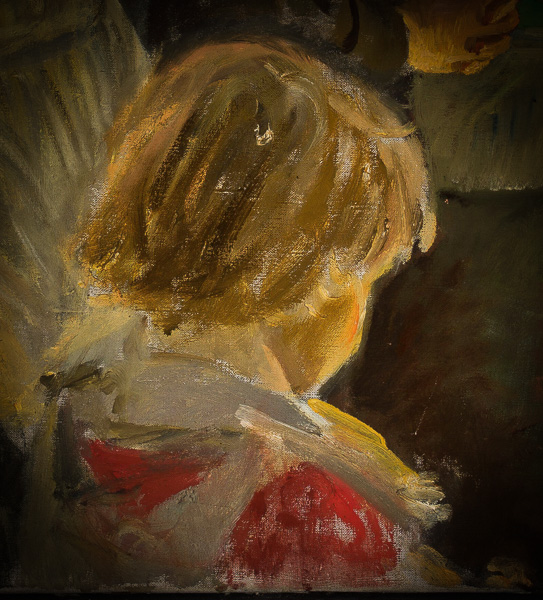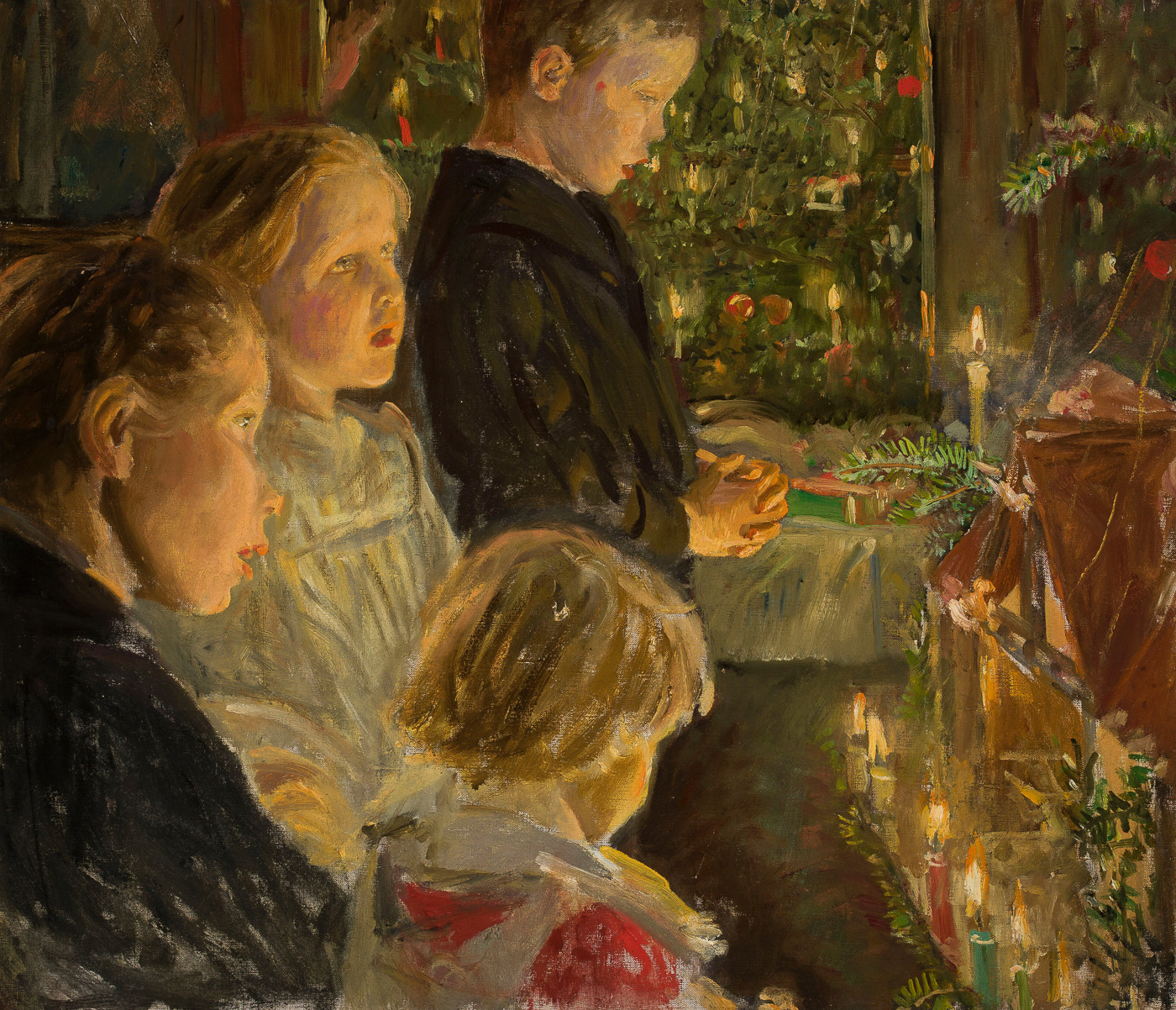
Longing for More
Why We Should Read Bittersweet Christmas Tales to Our Children

Dr. LuElla D'Amico
A couple of Christmases ago, my then-six-year-old daughter asked me if I would sit down with her to watch her new favorite movie. Because a certain ice-princess film was still a particular favorite in our house, I expected yet another spinoff or something else like it: a short film wherein a merry snowman embarks on a quest to find new holiday traditions for his royal pals in a fantasy kingdom, for example. In other words, a hefty dose of Christmas fluff.
When my daughter turned on an animated short adaptation of Hans Christian Anderson’s fairytale “The Little Match Girl,” instead, I was shocked. This certainly won’t be true to the story my father read to me as a child, though, I thought. Surely this story of a poor little girl who is attempting to survive by selling matches on the streets would now be highly sanitized. But much to my surprise, this version was faithful to the original story. Unsuccessful in her sales, the little girl gives up selling her matches and instead lights them one by one, seeing in each a dream of happier times. My daughter watched, entranced, as the little match girl shivered in the cold, imagining warmth and remembering the loving times she had once with her dear grandmother.
 “The grandma died, right?” my daughter asked me, watching while, in a flashback, the little match girl lit an old-timey wax candle on the branches of a Christmas tree while her grandmother held her up to it.
“The grandma died, right?” my daughter asked me, watching while, in a flashback, the little match girl lit an old-timey wax candle on the branches of a Christmas tree while her grandmother held her up to it.
“Yes, the grandma died,” I whispered back in response, still quite surprised that a modern children’s film would really allow such a sad and authentic scene to play out before us.
My daughter nodded, then went back to watching the movie. We sat and stared, arms around each other, as notes from Borodin’s Nocturne from String Quartet #2 punctuated the dramatic ending. The girl’s grandmother appears in spirit form as the music fades out: she takes the girl’s hand and guides her granddaughter into the afterlife. The match girl has frozen and died alone on the streets where she attempted to earn her survival one match at a time. We then witness passersby discover the child’s lifeless body as a comet marks her assumption into heaven.
Since that Christmas, my daughter and I have watched this little film again each year as part of our holiday celebrations. Each year, I also read the original Danish tale to her, just as my father, now long passed, used to read it to me. It has become a generational Christmas marker in our family, and I hope my daughter will pass this story down to her own children one day.
Although I was initially surprised at my daughter’s bringing this particular story back into our Christmas traditions, her instinct reminded me that the original Christmas story, though filled with hope, is not without its share of struggle and sorrow. Having traveled a long distance at the end of a fraught pregnancy, Mary and Joseph do not easily find the warmth and comfort they need when it is time for Mary to give birth in Bethlehem. Instead, Jesus, as we are reminded every December, is born in a stable, with barn animals for company, and is adorned with simple swaddling cloths instead of kingly garments. This is the miracle of the Incarnation: the divine becoming man in the humblest of circumstances, embracing the fullness of both human suffering and joy.

This is the miracle of the Incarnation: the divine becoming man in the humblest of circumstances, embracing the fullness of both human suffering and joy.

In light of this mix of pain and hope in the Nativity story, perhaps it is actually quite fitting for children’s Christmas stories to take a poignant turn. Stories such as “The Little Match Girl” echo the truths of the Nativity when they reveal that love and hope often go hand in hand with struggle and sacrifice.
Indeed, since my daughter discovered “The Little Match Girl,” I have often considered whether the alternative to this kind of story — the saccharine, emotionally one-sided Christmas stories popular in today’s approach to Christmas — is not somewhat overdone. Movies such as Elf spring to mind, as do the shiny seasonal books I often spot in the checkout lines at the grocery store in December, books filled with big-eyed cartoon characters scarfing down candy and tearing open neon-green-wrapped presents.
When we read our kids these stories, we tell our children that they should gloss over difficulties; yet in truth, children’s lives, like those of adults, are characterized by emotional depth rather than saccharine simplicity. In her short life, for example, my daughter has dealt not just with the sicknesses and deaths of two beloved relatives, but also with a frightening worldwide pandemic.  She knows loss, and already intuitively understands that although Christmas is beautiful, its beauty does not derive from over-the-top jolliness or sugary candy canes so sweet they hurt your teeth. So she is drawn to holiday stories that remind her that sadness is a reality and that celebrating Christmas more faithfully can cut through and make sense of that sadness, rather than simply ignoring it. True beauty is more than a superficial sheen, she knows: it is a powerful balm to the soul. The best Christmas tales remind us of this.
She knows loss, and already intuitively understands that although Christmas is beautiful, its beauty does not derive from over-the-top jolliness or sugary candy canes so sweet they hurt your teeth. So she is drawn to holiday stories that remind her that sadness is a reality and that celebrating Christmas more faithfully can cut through and make sense of that sadness, rather than simply ignoring it. True beauty is more than a superficial sheen, she knows: it is a powerful balm to the soul. The best Christmas tales remind us of this.
Now, dear me, I’m not saying that my little girl and I articulate any of this philosophizing to each other when we read and watch “The Little Match Girl” together each year. I am, however, saying that experiencing this story together has brought us closer to the deeper truths of the human condition — and to the One who was born to save us — than, say, reading a book about the some famous television puppies saving Santa Claus ever could. This is true even though neither story is overtly about the Nativity.
In her book Bittersweet: How Sorrow and Longing Make Us Whole, Susan Cain suggests that the highest art merges our souls’ longing for something grander than ourselves with the realization that we already possess some little sense of this grandeur inside us, even though the wholeness of it is out of reach. She writes: “The tragedy of life is linked inescapably with its splendor; you could tear civilization down and rebuild it from scratch, and the same dualities would rise again. Yet to fully inhabit these dualities — the dark and the light — is the only way to transcend them paradoxically. And transcending them is the ultimate point. “
When we properly commemorate Christmas, we include in our observances our longing for communion with Christ, for transcendence beyond our Earthly realm. We exist for Christ, in both our suffering and our joy, and we are right to observe this both during our Advent preparations and during our longer, perhaps lifelong wait for his final kingdom to come.
Christmas is thus not saccharine. It is truly bittersweet.
The best Christmas stories for children then are bittersweet as well. What would Little Women be without Beth’s death? What would “The Gift of the Magi” be if either spouse knew what the other’s gift or the sacrifice made to acquire that gift would be? What would “The Velveteen Rabbit” be if the rabbit were never burned, or if William never grew up? Without sacrifice, Christmas stories and their characters stagnate. Without sacrifice, Christmas never happens.
At the end of “The Little Match Girl,” Hans Christian Anderson writes, “No one imagined what beautiful things ‘the little match girl’ had seen, nor into what glory she had entered with her grandmother.” In this final note, the little girl is not lost to despair but is taken into a place of love and eternal comfort: she is taken home. It is as Susan Cain wrote: “The bittersweet is about the desire for communion, the wish to go home.” The best children’s stories transcend the physical here and take us to a spiritual there — they take us home.
When we read stories at Christmas with our kids this year, we should recall that children, too, have souls that long for something more. Their eyes may light up in candy stores, but their hearts light up when we read stories that call them to be more loving, more charitable, and to draw closer to their spiritual home. So perhaps we should put the Santa-saving puppies aside for this year, however fun such stories may be, and turn to “The Little Match Girl,” “The Velveteen Rabbit,” “A Christmas Carol,” and other such tales instead. Let’s seek out the flame within the cold during our Christmas reading this year with our children: let’s embrace the bittersweet.

